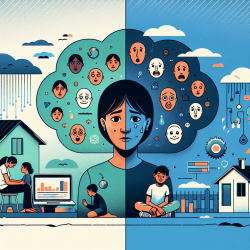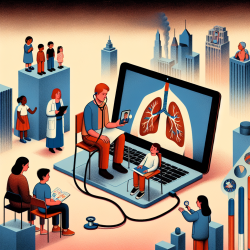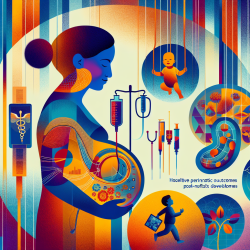Introduction
The intricate relationship between caregiver mental health and child psychopathology is a topic of significant importance, particularly in low-resource settings. A recent study published in the Brazilian Journal of Psychiatry, titled "Correlations between caregiver psychiatric symptoms and offspring psychopathology in a low-resource setting," provides critical insights into this complex dynamic. This blog aims to translate these findings into practical strategies for practitioners, especially those involved in online therapy services like TinyEYE, to enhance their approach to supporting children and their families.
Key Findings from the Study
The study conducted a cross-sectional analysis of 68 primary caregivers and 110 children in Brazil, using various psychological assessment tools. The results revealed a significant correlation between higher scores on the Self-Reporting Questionnaire (SRQ-20) for caregivers and psychiatric symptoms in their offspring. This correlation underscores the bidirectional nature of mental health issues within families, where caregiver depression can exacerbate child psychopathology and vice versa.
Implications for Practitioners
For practitioners working with children and families, these findings highlight the necessity of a holistic approach to therapy. Here are some actionable strategies:
- Comprehensive Assessment: Implement thorough assessments that consider both caregiver and child mental health. Utilizing tools like the SRQ-20 and the Strengths and Difficulties Questionnaire (SDQ) can provide a clearer picture of the family dynamic.
- Family-Centered Therapy: Engage both caregivers and children in the therapeutic process. Addressing the mental health of caregivers can lead to improved outcomes for children.
- Education and Support: Educate caregivers about the impact of their mental health on their children. Providing resources and support can empower caregivers to seek help and make positive changes.
- Community Resources: In low-resource settings, leverage community health workers and local resources to extend support beyond the therapy session. This can include group therapy sessions or community workshops.
Encouraging Further Research
While this study provides valuable insights, it also highlights the need for further research, particularly in low- and middle-income countries (LMICs). Practitioners are encouraged to contribute to this growing body of knowledge by conducting their own studies or collaborating with research institutions. Understanding the specific cultural and socioeconomic factors at play can lead to more effective interventions.
Conclusion
The correlation between caregiver psychiatric symptoms and child psychopathology is a critical area of study that can inform better therapeutic practices. By integrating these research findings into their work, practitioners can enhance their ability to support families and improve mental health outcomes for children. For those interested in delving deeper into this topic, the original research paper can be accessed through this link: Correlations between caregiver psychiatric symptoms and offspring psychopathology in a low-resource setting.










